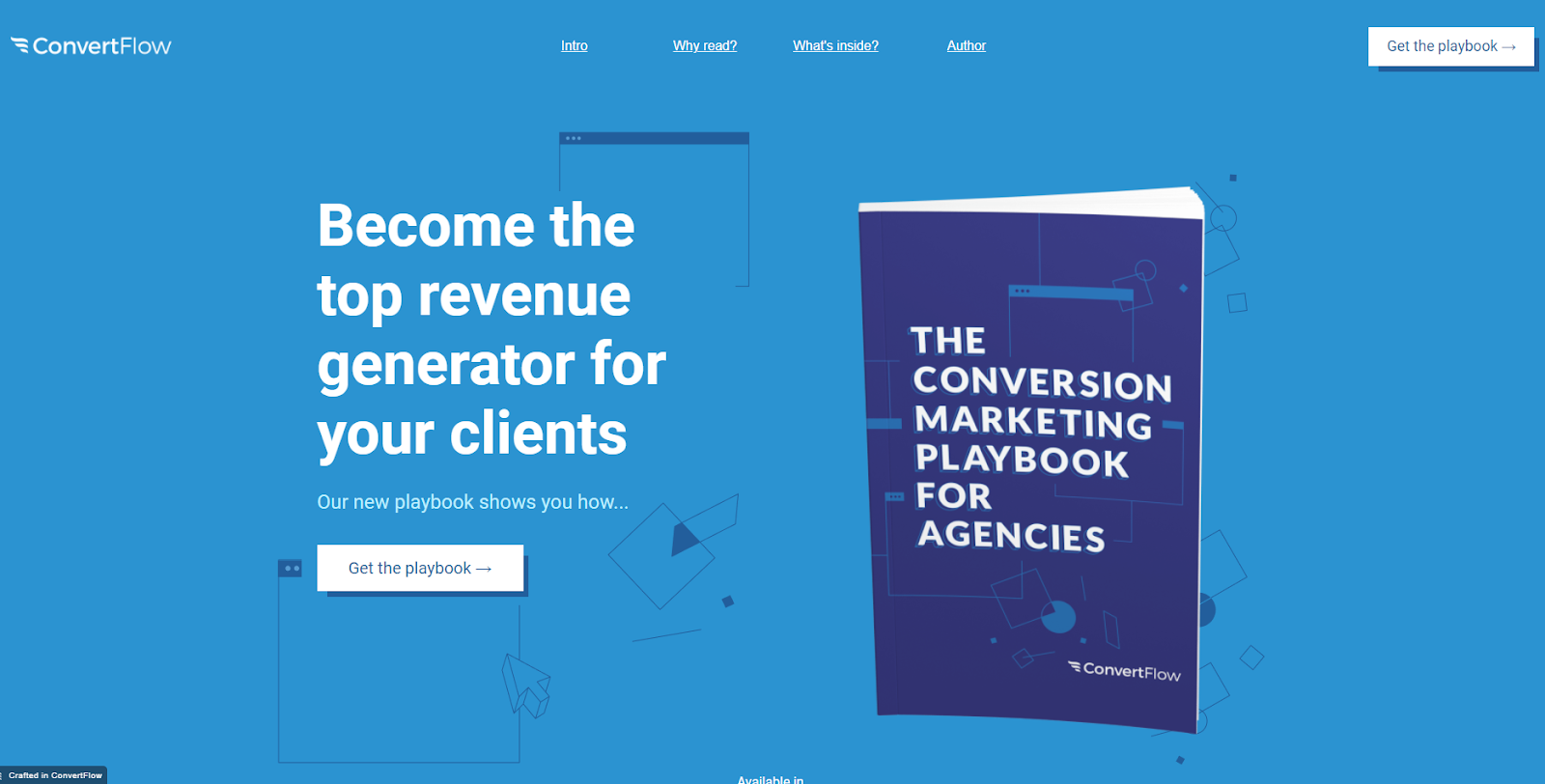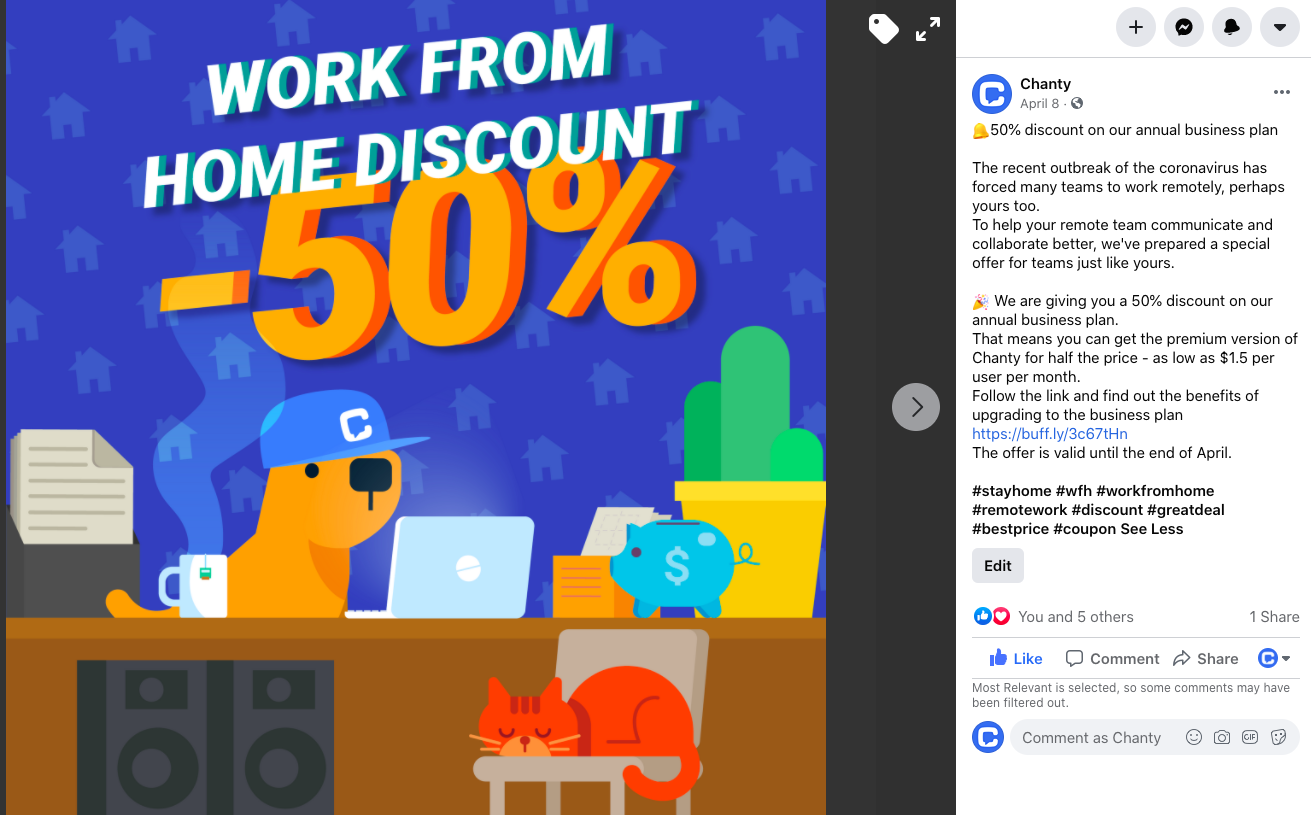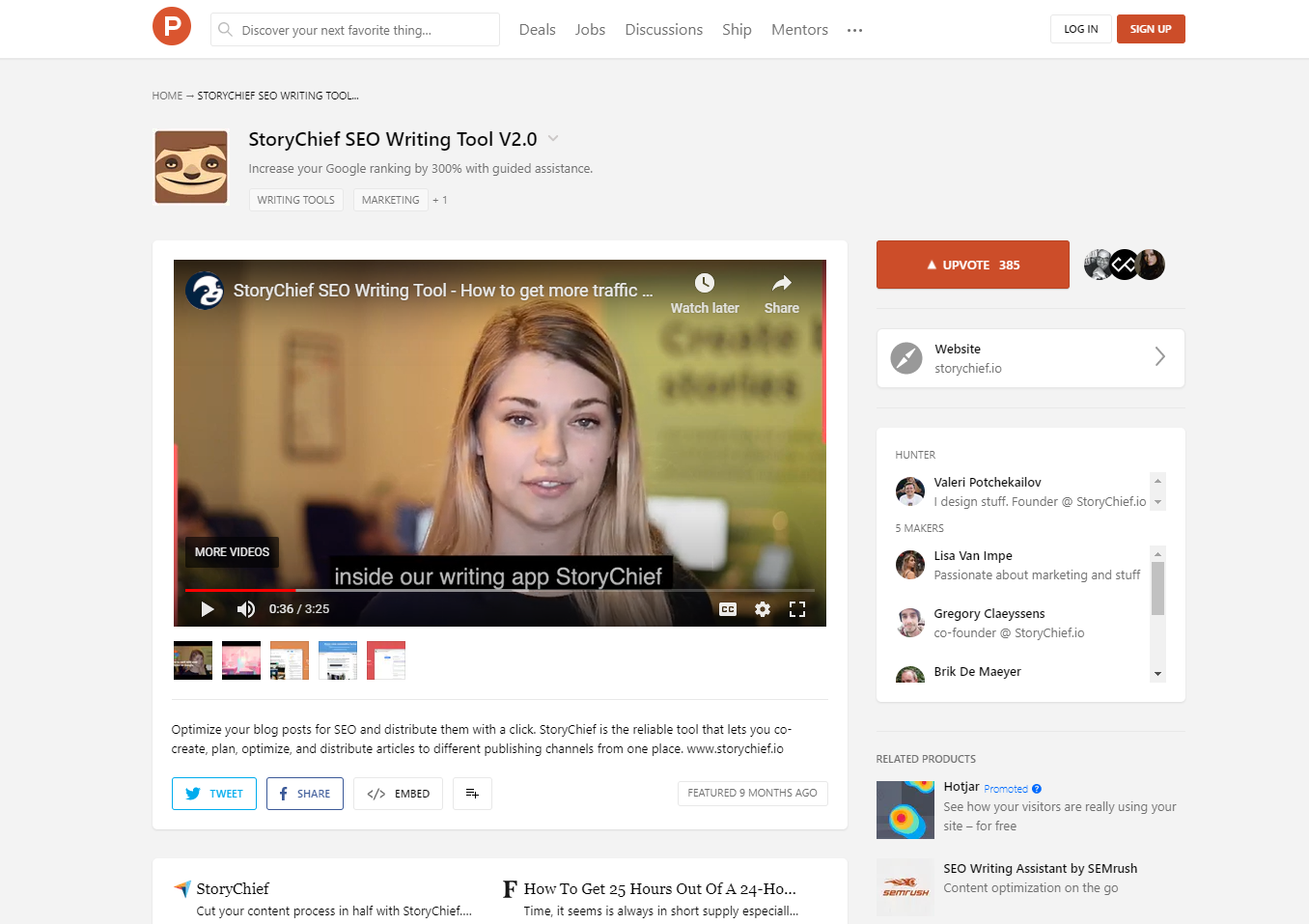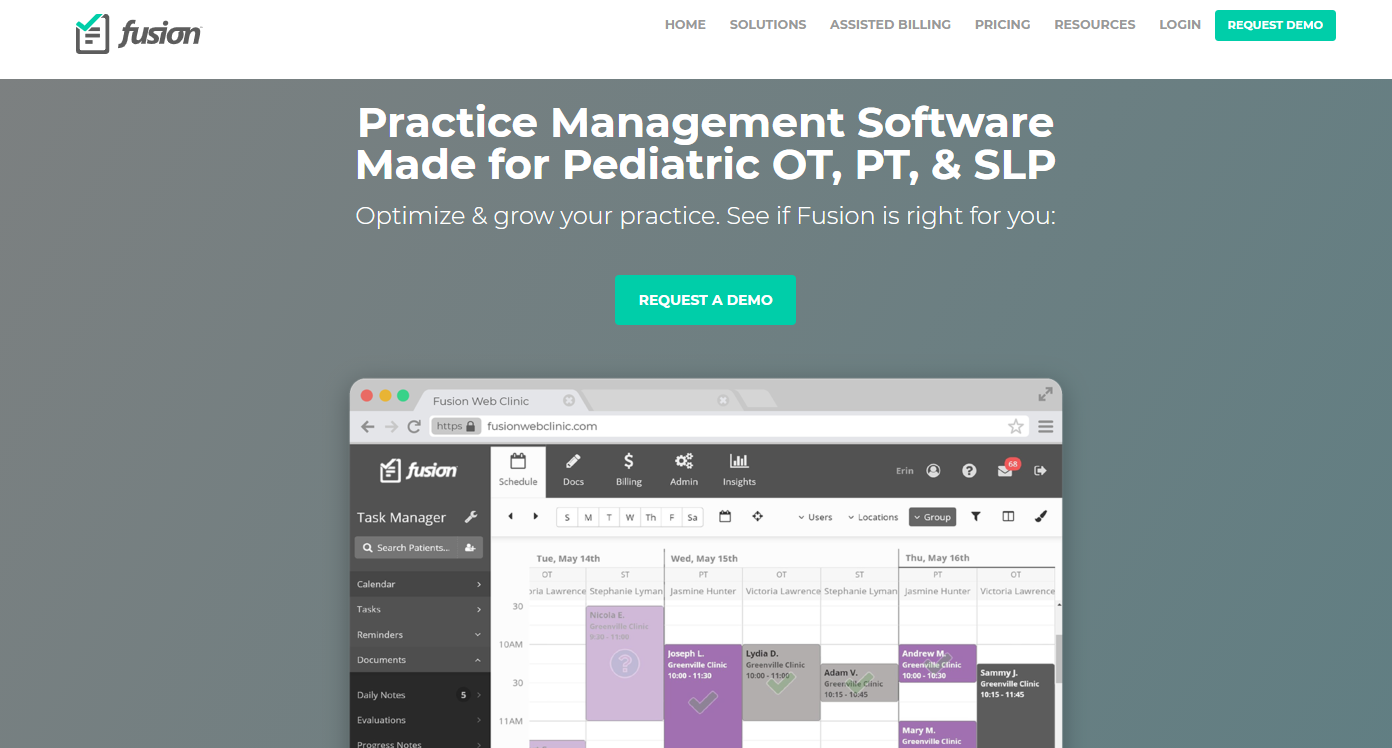
Want to know what really works with SaaS marketing? Listen to these SaaS marketers tell you about a campaign that worked, why they tackled it, and what they gained.
We’ve asked digital marketers at up-and-coming SaaS companies what they’re doing to increase ARR.
Keep scrolling for detailed explanations of real SaaS marketing campaigns.
1. Building topical authority for important SEO keyphrases

Winning in competitive SEO niches is difficult, and Slite needed to find a way to rank in top positions in the collaboration space. Think project management, online wikis, knowledge bases, etc.
As digital marketers, we know that Google is ranking pages based on topical authority instead of old tactics like keyword stuffing. So we decided to focus intensively on the same topics as we optimised pages and did link building to increase our topical authority. For example, we focused on “employee handbook” and “employee handbook template” at the same time.
As a result, we got SEO results faster, ranking on page #1 for these keywords in a matter of weeks, and as a result, we were able to increase organic traffic by 190% and signups by 120% in just three months.
- Jake Stainer, Co-Founder of Outreach Humans
2. Generating buzz (and 850 sales) for a physical book
Rather than waiting for launch day, we announced our book, The Ecommerce Marketing Handbook a little more than a month ahead of time. So when we launched on October 6th, we had a waitlist of almost 2,500 people to market to.
As we built that list of subscribers, we continued to keep them excited and engaged by sharing exclusive information with them first. Things like unveiling the 17 experts we interviewed, the foreword from Shopify President, Harley Finkelstein, and more.
Then on launch day, we announced a 1-hour flash sale for 50% off that drove more than 600 sales. Since then, we’ve continued to market to that list of high-intent subscribers and have sold more than 850 copies. All before the first book has even been shipped.
No matter what you’re selling, building hype ahead of a launch is hugely valuable. Not only will it generate buzz, it’ll also drive sales. And if the people on your waitlist don’t buy, ask them why! It’ll help you understand and be able to navigate any objections with that group and beyond.
- Lauren Hall, Brand Marketing Associate at Privy
3. Simplified a/b testing process for a homepage

At the beginning of the year, we overhauled our Curator’s homepage. The end result was a 38% increase in the visit to sign up conversion rate greatly lifting our ongoing sign-ups.

Here’s what I learned from the test:
- Design the experiment – Before starting production we wrote an experiment brief which included a hypothesis, hypothesis justification, and minimal viable test design.
- Write the copy designed to convert – We had a copy-driven approach to come up with the test creative. We started with a copy document with the high-level sections we thought were important and then explored various ways to execute based on a review of our competitors and our favourite homepages.
- Align the design – We spent the least amount of time on the actual design. For the first version of the test, the design was done directly in HTML and CSS by a non-designer. Once we knew the design was successful, we had a designer clean it up.
- Wire up the website – Instead of using an a/b testing vendor we set up the test ourselves by assigning site visitors an “experiment” value “control” or “test” and rendering a different page on the server. We then tracked uses via Google Analytics by using a custom dimension. We set up a custom dashboard and filtered the data with segments based on the “experiment” custom dimension. Check out the dashboard below.
- Determine a winner -With any key experiment we track the results daily and determine if a result is significantly better using VWO’s simple to use calculator. We always set a deadline for when to finish experiments, and if we don’t reach statistical significance (p-value = 5%) within the timeframe allocated, we declare the test a failure and move on. With this experiment, we reached significance in less than two weeks.
- Vlad Mehakovic, Head of Growth at Curator
4. A successful Black Friday launch
We launched a pretty successful campaign for Black Friday in 2019. We created popups for new and existing users of our app, and we launched Facebook and Instagram ads for new users over about a week.
During that time, we got 270 new customers and had plenty of upgrades (free to trial) from our existing users. Given how competitive it can be during that period, it was a great success. We learned that even though Black Friday is traditionally a time when everyone has discounts, you shouldn’t be discouraged and you should run your own promotion as well.
- Petra Odak, Chief Marketing Officer at Better Proposals
5. An ebook catered to a specific buyer persona

A campaign that worked really well for us at ConvertFlow recently was writing a book specifically targeted at one of our key buyer personas.
The goal was to get digital agencies signed up to our partner program, and thus using our conversion software with their own clients. So we put together a book detailing the concept of a digital agency offering “conversion services”. The book covers everything—what conversion marketing is, why to offer it to clients, and how to roll it out as a service at an agency.
The actual process for us was to then drive people to a landing page via paid ads and outbound email outreach. The page offers a free digital download of the book, with a physical copy available as an upsell for just the cost of shipping.
This page has currently had 1,388 page views and 574 conversions, at a rate of over 41% – which has been an excellent top of the funnel strategy for getting this buyer persona signed up to the partner program. The key thing we learned was the importance of not only creating content that is genuinely useful but also that it’s catering to a specific buyer persona – rather than just your audience in general.
- Michael Glover, Content Marketer at ConvertFlow
6. Paying attention to cultural changes

Chanty is a team communication and collaboration software. One campaign that we recently did was our discount in April of 2020. We offered 50% off all new paid plans because we wanted to help out teams that were just starting out with remote work.
Since our tool was made to communicate better in a remote setting, we wanted to create a discount for all the teams that had to go remote because of the coronavirus pandemic. Over the course of one month, we acquired around 400 new customers on a paid plan, and we had about 100 upgrades from free trial to paid accounts.
The biggest lessons for us were that you have to time your discounts carefully and also make sure you’re selling to your precisely defined target audience. Otherwise, you’ll experience higher churn and more costly customer support.
- Jane Kovalkova, CMO at Chanty
7. Turning a new feature into a Product Hunt launch and gaining 500 subscribers in one day

A while ago we launched our SEO optimiser and managed to get over 500 new people signing up to StoryChief in just one day. StoryChief is a content marketing operations platform.
The whole campaign was focused on producing enough valuable content so people could easily see the benefits of this feature for their content marketing process. We launched on Product Hunt, made multiple announcements and ‘how-to’ videos, wrote blog posts with the right keywords, made downloadable checklists, and encouraged our affiliates and users to spread the word. Because of all this content, we eventually got picked up by some big news sites, and our campaign was a success.
The moral of the story? Product Hunt isn’t just for when you launch a new SaaS product. You can use it for features too. You’ll likely have the best success with Product Hunt for a feature launch if you have a freemium pricing model.
- Lisa Van Impe, Marketer at StoryChief
8. Targeting very specific affiliate partners
In April 2020, we ran our first affiliate marketing campaign for our B2B SaaS API. Considering we were a bootstrapped company, affiliate marketing was very interesting to us.
We were completely new to the affiliate marketing game. Still, we quickly realised that one of the most difficult parts was recruiting quality affiliates with a big audience or agencies and freelancers that could sell our software to their clients.
With my partner and I being developers ourselves, we thought about using some code and automation to gather highly qualified potential affiliates. Here is what we did:
- We built a bot to extract B2B SaaS company names and domains from Product Hunt, AngelList, Indie Hackers. This gave us thousands of companies in a CSV file.
- For each company, our bot looked for affiliate programs on their marketing website.
- Then we manually made a shortlist to filter the companies that were very similar to us (Developer tools, APIs…)
Once we had this list, we analysed their backlinks containing the affiliate parameter in the URL (each affiliate software uses a special parameter for the affiliate ID code). We used Ahrefs.com for that. This produced a list of all of their active affiliates.
Since we knew that they were already running an affiliate program, we then ran an email and Linkedin outreach campaign with highly personalised messaging asking them if they would be interested in a partnership with us.
The reply rate was insane, above 50%. We managed to get our first 40 partners! This channel is now generating 10% of our new customers! Considering it took us only a few days to run, we’re extremely happy with the results.
- Kevin Sahin, CEO of ScrapingBee
9. Building links to an important blog post

Skyscraper link building is the most successful SaaS marketing campaign we’ve ever executed.
We made a web page of 500 remote online working tools for our old project, combined with great design. It raked in 100 links for the website within a month, enhancing our DR by 20%.
This web page works well because it’s highly responsive to the current remote working trend, particularly during Covid, which generates the need for remote working tool utilisation. Therefore lots of websites with high DA are willing to include the remote working page as an addition to their publications.
The biggest lesson I’ve learned in this process is a winning SEO campaign requires impressive visual design, quality content, trustworthy data, and reliable outreach strategies.
- Caroline Lee, Co-founder and Growth Marketer of CocoSign
10. Adding animated videos to social media posts

At Nextiva, using automated videos to accompany our social media posts helped increase our engagement rate across all our social media channels.
The campaign’s results were evident on our LinkedIn channels, which saw an increase of 113% in engagement rate. Our Twitter and Facebook posts increased by 94% and 43.5%, respectively.
The rise in engagement rate also meant increased traffic to our site, which increased revenue subsequently. The campaign was a success since animated videos were a new form of content for our audience.
- Yaniv Masjedi, the Chief Marketing Officer of Nextiva
11. Analysing 1000 SaaS products for a valuable report
Our goal for the State of SaaS Product Onboarding Report was to become the thought leader within SaaS onboarding. We generated 20,000+ visits to the page and 2,000+ leads.
Initially, a big motivator for this project was simply to get backlinks. The reports had over 1000 hours invested in it, and we wanted to increase our domain authority and ranking. We were successful in driving backlinks and traffic, but I also learned that this growth initiative really put us on the map with the topic of onboarding. As marketers, we should create high-value for customers more often.
I learned that we, as marketers, should create such content often for customers & prospects. It’s a genuine growth initiative that puts you out on the map.
- Aazar Shad, SaaS growth consultant
12. Search marketing with segmented follow-up

For Fusion Web Clinic (one of our clients at Raindance), we were able to increase leads by 500%, demo signups by 44%, new customers by 20%, and ARR by 245% in one year by using inbound marketing powered by behavioural targeting, remarketing, and digital advertising.
We filled our funnel with paid and organic search and then used behavioural targeting to segment our audience according to what stage of the buyer’s journey they were in.
The primary segments were:
- Qualification: This was a broad group of anyone who was interacting with our content without meeting any of the criteria to be placed in another segment.
- Awareness: These were people who were interacting with content related to the specific problem we solved.
- Consideration: These were people who visited our features page, our contact us page, and other pages about our solution.
- Decision: These were people who were viewing our pricing page, our demo page, etc.
The remarketing and email campaigns for our Qualification segment included broad topics of interest, but then also topics more directly related to the problem we solved. That way, we would know when someone was ready to move to the next stage of the funnel.
Once they interacted with Awareness stage content, they would be placed in the Awareness stage segment. They would then continue to receive Awareness stage content, but also the occasional link to Consideration content, and so on.
- Roy Harmon, Founder of Raindance
Ready to improve your SaaS marketing? Try GoSquared.

